Volleyball
Skills Passing -
How to master in serve receive?
Explore "volleyball skills passing" -section and learn how to master in
volleyball serve receive.
What are the most important aspects in
passing?
Volleyball Skills Passing - Definition of Volleyball Pass
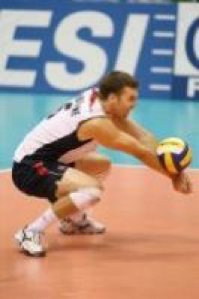
The player performs a pass when s/he hits the ball
around the torso
level - with forearms of the straightened arms.
The player moves arms unattached under
the approaching ball, stops and takes a well balanced and low passing
position.
The player places straightened arms together in front of the
body, lets the ball hit the platform formed by the forearms. S/he
redirects the ball to the setter - by placing the arm platform under
the ball and pointing the platform toward the setter - who is the
playmaker of the team.
The
player may use a very light "directional push" with the arms, legs and
body,
if an extra power is
needed to push the ball to the setter.
However, there is absolutely no
need to swing the ball with the arms, or push heavily
with the
legs.
When serve receiving the ball, most often the serve travels
so fast that there is no need for "extra push".
When?
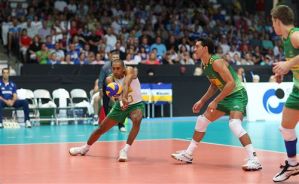 The volleyball player uses (forearm) pass mainly to
The volleyball player uses (forearm) pass mainly to
- receive opponent’s serve (when the pass is called a serve receive)
- play defense after opponent's attack (when the pass is called a dig)
Why?
The purpose of a pass is to direct the approaching ball to the setter who is the playmaker of the team.Passer is the first person to touch the ball when it is travelling over the net.
Pass may also be called a bump, or a serve receive or a dig as mentioned earlier.
How?
- Movement to the ball (by shuffling)
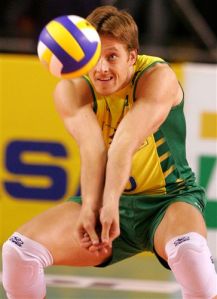
- Stop the movement
- Remember to keep the basic position
(balanced, low)
- Keeping the ball in front of your body (if
possible. Also other techniques exist.)
- Place the platform under the ball and direct it
toward the setter.
- No swinging with arms. No need to push heavily with legs.
Volleyball Skills Passing - Shuffling and Basic Position
Be sure to check shuffling and basic stance information, if you are not familiar with the terms.Volleyball Skills Passing - Important Tips
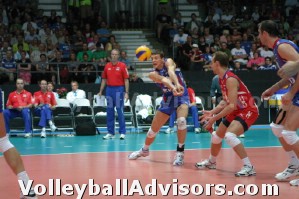
In volleyball you always have to be ready to move. Don't expect the ball come to you. You need to ve your feet to go under the ball. Always!
Many non-volleyball players assume in volleyball
you just stand
on the court and you really don't have to move. In a long
match you
actually may end up moving around the length of a couple of
miles!!
Stance:
Keep your knees bend.
Do
not just lean forward with your torso, but drop your hips closer to
ground.
Shuffle
& Pass:
Your goal is to move (by shuffling) under the ball
and pass it
in front of your body.
Ball
in Front (if possible):
It is not possible every time, but your absolute
goal is to keep the ball in front of you when passing.
Stop
the Movement:
Remember to stop your movement before the
volleyball hits your forearms. This gives you a better
balance. When your both feet are on the ground, it
is much easier to pass the ball.
Volleyball Skills Passing - the Most Important Passing Tip
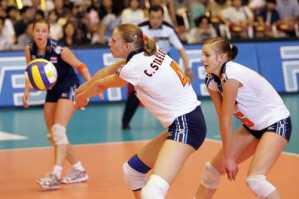
Do not swing the ball with your arms!! One of
the most common mistakes with beginning volleyball players is
to swing arms heavily when passing. Swinging makes the pass inaccurate.
(This swinging often occurs when coaches toss low speed balls to
beginning volleyball players without the net. It is better to send the
ball over the net.)
When the volleyball is served over the net, it approaches so fast you
do not need to swing
it.
It is enough
to place you arms under the approaching volleyball and just redirect it
to the
setter. Most likely you need to reduce the force by cushioning it,
absolutely not to swing it.
Volleyball Passing Quote

Volleyball Passing Related Pages
Volleyball Overhead Passingreddit.com - Passing tips from other players
Like this page:





